Click to enlarge any of the
photos below.
Our thanks to Paul for
providing these. |
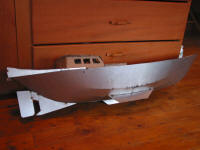
Double keel and double chine. |
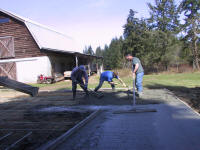
Concrete poured for a work site. |
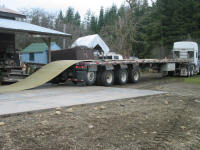
The truck drives out from under
the steel. This is 3/16 inch,
wheel abraded and primed steel.
|
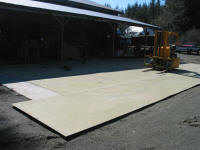
The steel sheets are butt jointed
and tack welded together, and
then the pattern from the model
is transferred to the steel. |
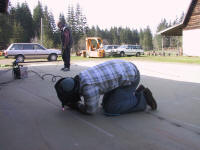
And Paul uses a plasma cutter to
cut along the pattern.
|
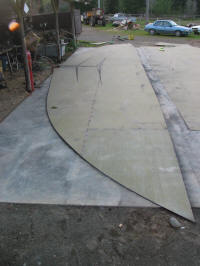 |
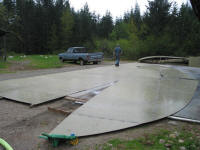
With one side cut out it is drug
on top of the second side so the
the pattern can be transferred
exactly.
|
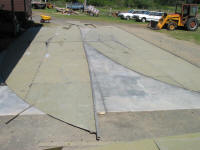
Both sides are now cut and a
stainless steel pipe has been
welded to the top of the
bulwark.
|
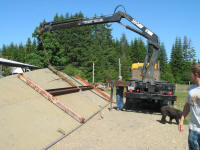
I-Beams are temporary welded
to both sides so they can be
turned over.
|
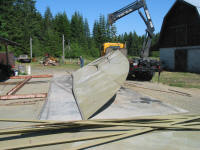
With the other side exposed the
stitch welded will be completed
on the outward facing side.
|
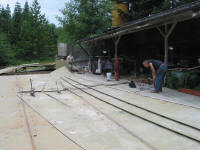
Brent Swain joins Paul to pull the
hull together in its original double
ender form. Angles have been
attached to increase the
longitudinal stiffness. |
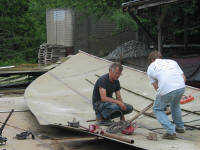
Paul and Brent pulling it together.
|
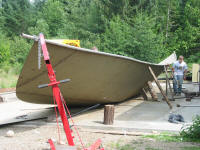
Lifting the ends and sides lets
gravity help close the chines. |
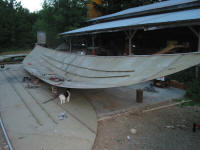
With the darts stitch welded
together one side is done. |
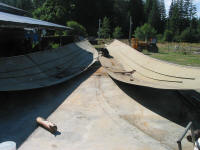
After the second side is done,
the two sides are joined together
about 1/4 of the way back from
the bow. |
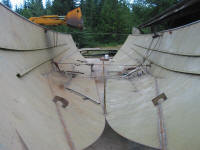
Viewed from the bow, a front
end loader and hoist pull the
halves together and upright.
|
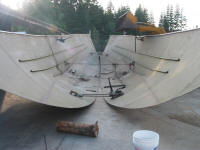
More welds are added and
earlier welds that have broken
are redone as the halves close
together. |
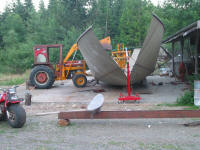
The model sits in the foreground
and the hull continues to close.
|
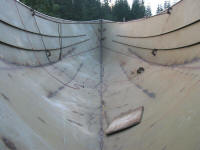
The bow is temporarily closed to
form the original double ender.
|
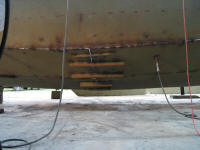
Strong backs are added to help
close the gap between the ends
of the chine plates. |
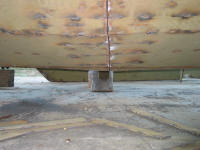
Once welds are in place, the
strong backs are removed.
|
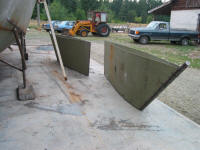
The hull is jacked up and braced
in preparation for the keels.
Note the 2 inch bar on the front. |
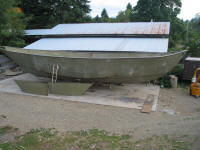
There was a small error in the
pattern that resulted in a
distortion at the sheer toward the
bow. It will be corrected later as
the deck and bulwarks go on. |
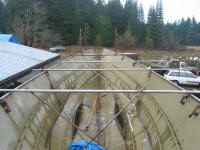
Spreaders are added inside the
keels, then a pattern is made, the
holes are cut in the hull and the
keels dropped into place. |
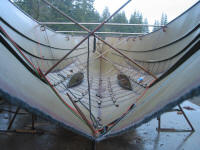
Doublers are welded in across
the chines to stiffen the hull 3/16
inch hull plate. Using 1/4 inche
plate makes this unnecessary. |
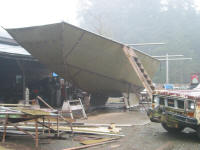
In order to get more room on the
aft deck the double ender design
is abandoned in favor of a broad
transom of a Junk sailboat. |
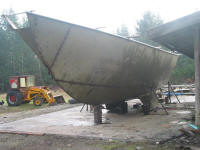
To match the Junk look, the bow
is also split open and squared. |
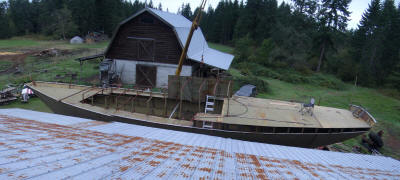
Deck framing was machine bent to give a 6 inch arch
across the
deck, and a crane was acquired to help with the
plating. |
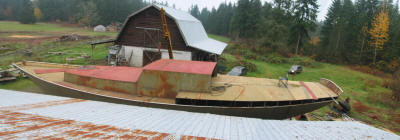 Cabin
tops are added Cabin
tops are added |
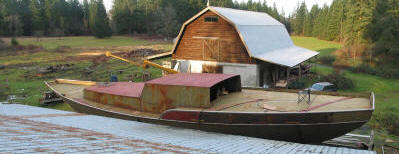
Bulwarks go on. |
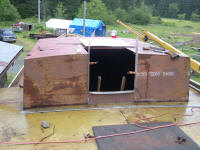
Companion way added. |
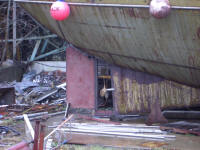
Skeg, stern tube and rudder. |
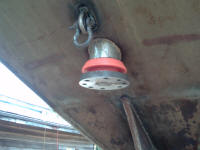
Bolt flange on rudder post. |
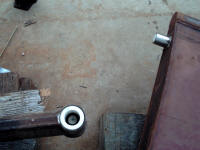
Ruder detail. |
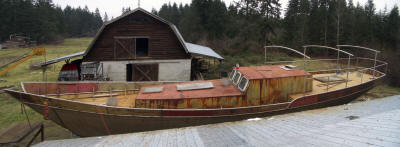
Aft hand rails and the beginning of the aft deck
canopy. |
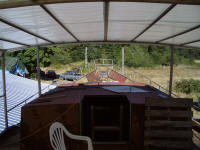
The frame is all stainless steel. |
|
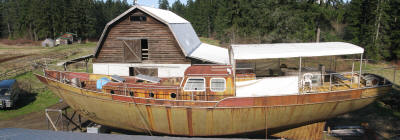
The aft deck can be fully enclosed by canvas. |
|
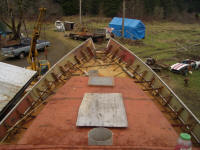
Forward bulwarks going in.
|
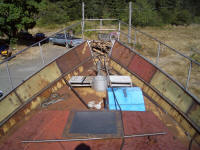
Hand rails and testing a raised
forward deck. |
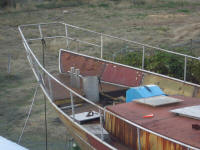
Forward deck goes in.
|
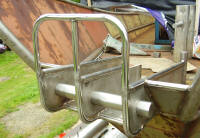
Bow roller. |
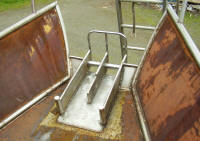
Bow roller. |
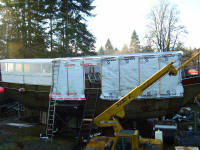
Covering up for the winter. |
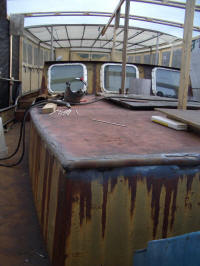
1/2 Stainless pipes round out the
edges of the cabin tops. |
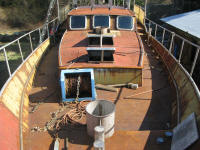
Hand holds added to the cabin
tops. A deck anchor winch is
acquired and will be enlarged to
support deep water anchorages.
|
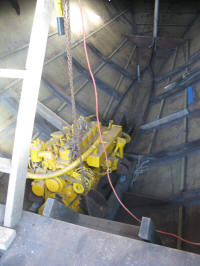
Engine test fit onto it's bed. |
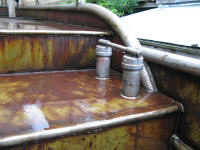
Water and fuel fill ports added.
|
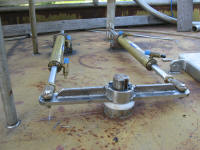
Rudder hydraulics.
|
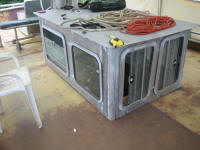
Aft deck table, aft cabin light and
engine removal hatch. |
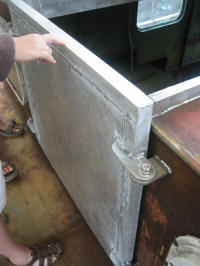
Completed companion way. |
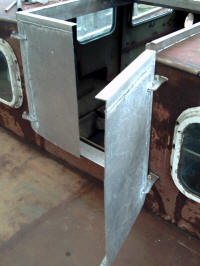
Open companion way. |
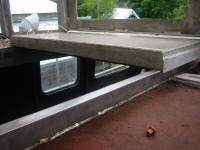
Completed companion way
hatch. Aluminum hatch on a
stainless steel rail.
|
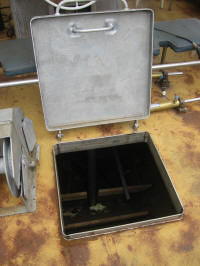
Aft deck escape hatch.
|
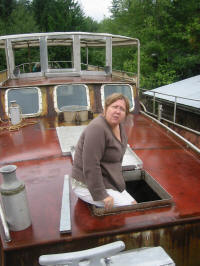
Kay climbs out of the forward hatch. The cargo
hatch is just
aft. |
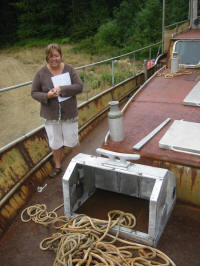
Enlarged anchor winch and the
sheet winches set where they will
be installed. |
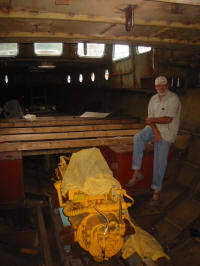
Looking forward to cabin sole
above fuel and water tanks. |
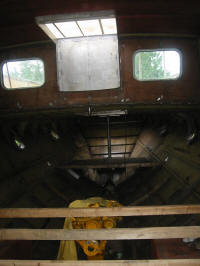
Looking aft at the aft cabin berth
and the rudder post. |
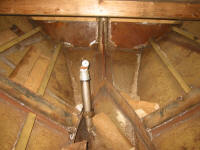
Pressure testing the skeg which also serves as the
hull cooler for the engine.
|
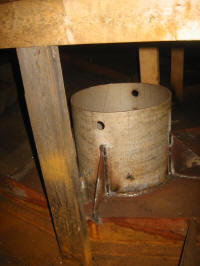
Main mast step. |
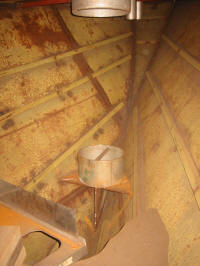
Forward mast step. |
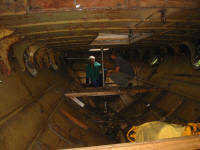
Deck framing looking aft.
|
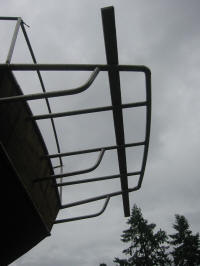
Dingy support off the transom. |

Portals installed for additional
light in the aft cabin.
|
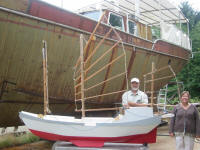
Jack and Kay with Paul's boat and the
model of Seeker.
|
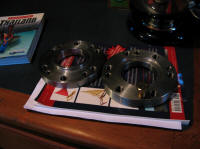 |
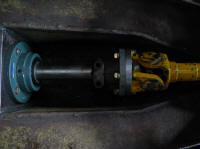 |
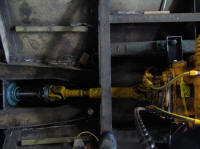 |
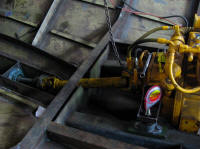 |
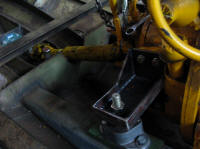 |
U-joint drive shaft connected with custom adapters. |